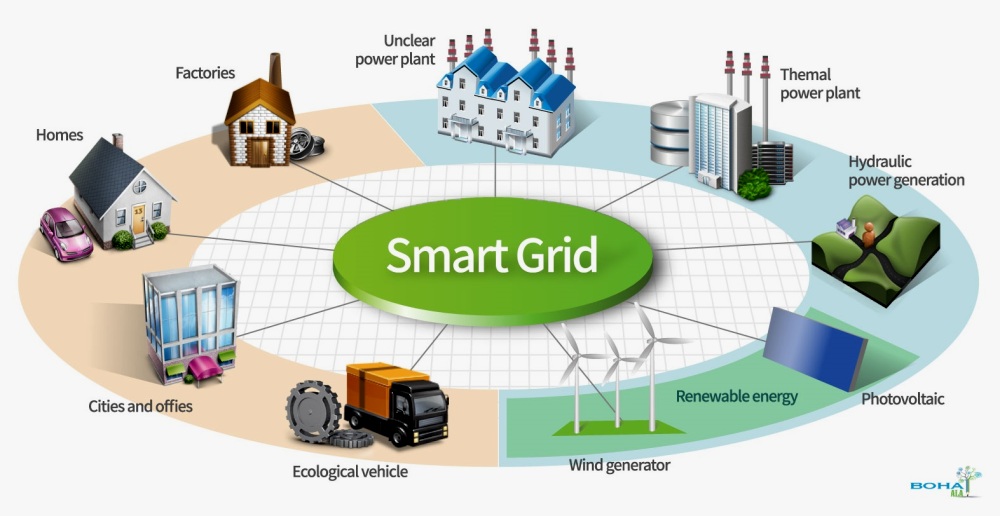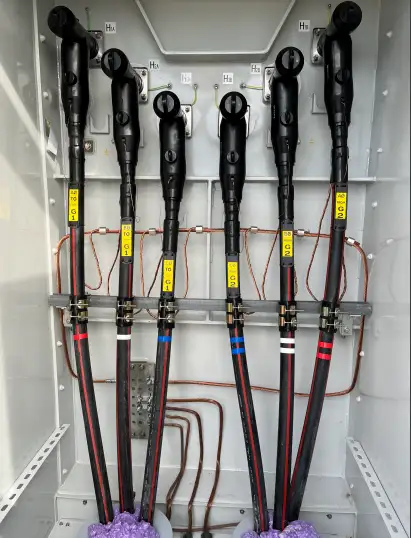Grid Modernization Explained
By R.W. Hurst, Editor

Download Our OSHA FS3529 Fact Sheet – Lockout/Tagout Safety Procedures

- Learn how to disable machines and isolate energy sources safely
- Follow OSHA guidelines for developing energy control programs
- Protect workers with proper lockout devices and annual inspections
Grid modernization improves the electric power system with smart technologies, automation, and renewable integration. It enhances grid reliability, resilience, and efficiency while enabling two-way communication, distributed energy resources, and better outage response for future-ready power delivery.
What is Grid Modernization?
Grid modernization is the process of upgrading the electric grid with intelligent systems to improve reliability, resilience, and efficiency.
? Integrates renewable energy and distributed resources
? Enhances grid automation and real-time monitoring
? Strengthens cybersecurity and outage management
We can build a more sustainable, resilient, and efficient power grid by integrating smart grid technologies, renewable energy sources, and innovative strategies. As the world continues to face the challenges of climate change and evolving energy needs, grid modernization is crucial to shaping a cleaner, more reliable future.
The energy industry has undergone a rapid transformation in recent years, driven by technological advances, policy changes, and growing environmental concerns. Grid modernization is at the heart of this transformation, ensuring an efficient, resilient, and sustainable electricity supply. Moreover, as the world transitions to a more sustainable future, grid modernization plays a critical role in addressing the challenges of integrating clean energy, improving reliability, and enhancing the overall performance of power systems.
One of the main aspects of grid modernization is deploying smart grid technologies. A smart grid involves integrating advanced communication, automation, and control systems to improve the overall management of the electricity network. This approach enables grid operators to respond swiftly to changes in demand, integrate renewable energy resources, and enhance grid resilience.
Resilience is a key objective in modernizing power systems, as it helps to ensure uninterrupted service during extreme weather events, natural disasters, and other threats to the electrical grid. By embracing new technologies and strategies, grid modernization initiatives increase resiliency and reduce the likelihood of power outages.
FREE EF Electrical Training Catalog
Download our FREE Electrical Training Catalog and explore a full range of expert-led electrical training courses.

- Live online and in-person courses available
- Real-time instruction with Q&A from industry experts
- Flexible scheduling for your convenience
Distributed Energy Resources (DERs) are crucial to modernizing the grid. DERs are small-scale, decentralized energy generation and storage systems, such as rooftop solar panels, wind turbines, and batteries, that can be interconnected with the grid or function independently. By incorporating DERs into the grid, we can diversify energy sources, decrease reliance on fossil fuels, and ensure a more reliable and efficient power supply.
Energy Storage
Energy storage is another vital component, as it effectively integrates intermittent renewable energy sources such as solar and wind. In addition, storage systems can provide electricity when needed by storing excess energy during times of low demand, ultimately improving grid stability and reducing greenhouse gas emissions.
Advanced Metering Infrastructure (AMI) is also essential, as it provides real-time data on energy consumption and grid conditions. This information enables utilities to monitor and manage energy use more effectively, improving efficiency and lowering operational costs. Furthermore, AMI empowers consumers by giving them greater control over their energy usage, encouraging more sustainable consumption habits.
Demand response is another crucial aspect. This strategy involves adjusting consumers' electricity consumption in response to grid conditions or energy prices, thereby balancing supply and demand. Demand response programs can prevent blackouts, reduce grid stress, and support the integration of renewable energy resources.
Microgrids are smaller-scale, localized power networks that can operate independently or be interconnected with the main grid. They play an essential role in modernizing the grid by offering greater flexibility, improving reliability, and facilitating the integration of renewable energy. In addition, microgrids can help communities become more energy resilient, particularly in the face of natural disasters or other disruptive events.
Government initiatives, such as the Department of Energy's efforts to support grid modernization, focus on enhancing the grid's long-term reliability and efficiency. This program also aims to accommodate the increasing demand for electric vehicles, which are expected to play a major role in future energy consumption patterns.
Grid Modernization Standards
Smart grid initiatives involve a range of technologies, systems, and equipment. These include renewable energy resources, smart grid technologies, distributed energy resources, energy storage systems, and advanced metering infrastructure, among others. These components must work together seamlessly to achieve the goals, including increased efficiency, reliability, and grid sustainability. This requires establishing industry standards that ensure interoperability, compatibility, and safety.
Standards provide a framework for the design, installation, operation, and maintenance of technologies. They enable different systems, equipment, and devices to communicate and exchange data seamlessly, making the grid more efficient and effective. Standards also ensure the safety and reliability of the grid by setting minimum requirements for equipment performance, installation, and operation. Compliance with standards reduces the risk of equipment failure, outages, and other safety hazards.
Adopting standards also helps reduce costs and increase the scalability of smart grid initiatives. Standardized equipment, systems, and practices are typically more affordable, as they can be produced in larger quantities and benefit from economies of scale. Standards also enable greater scalability of initiatives, allowing them to be implemented more widely and consistently.
Another critical role of standards is fostering innovation. Standards development and adoption involve collaboration between industry stakeholders, including equipment manufacturers, utilities, regulators, and other experts. This collaboration fosters innovation by encouraging the exchange of ideas and facilitating the development of new technologies and approaches. Standards also provide a level playing field for industry players, allowing for fair competition and encouraging the adoption of the best available technologies.
Electricity Today T&D Magazine Subscribe for FREE

- Timely insights from industry experts
- Practical solutions T&D engineers
- Free access to every issue
Grid modernization standards are essential for the successful implementation of grid initiatives. They ensure the grid's interoperability, compatibility, safety, and reliability while reducing costs and increasing scalability. Standards development and adoption also foster innovation and collaboration among industry stakeholders, leading to a more sustainable, resilient, and efficient grid.
Related Articles







